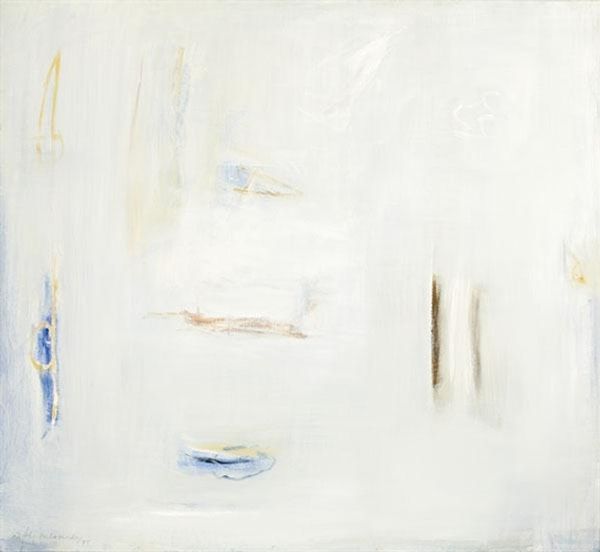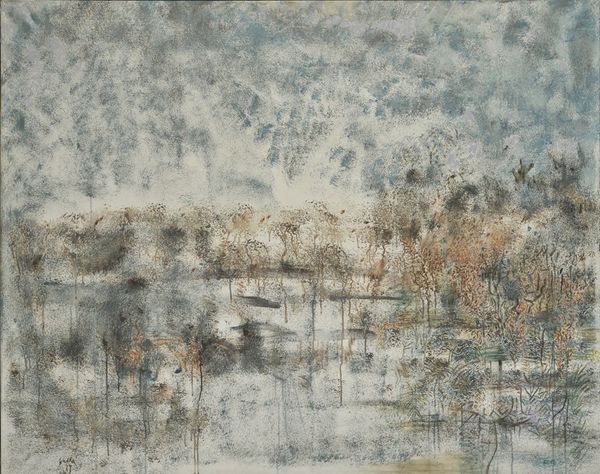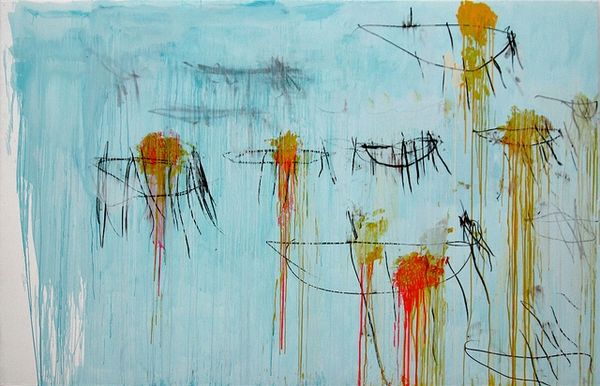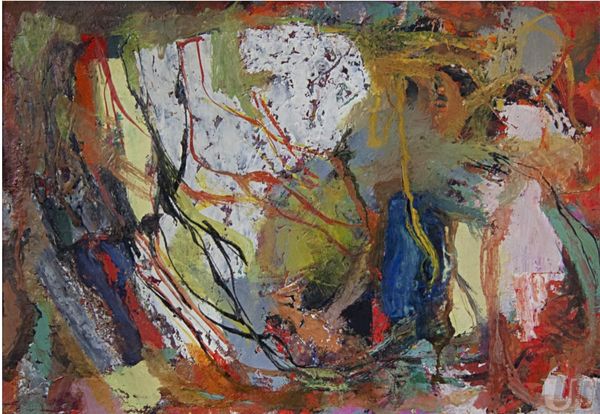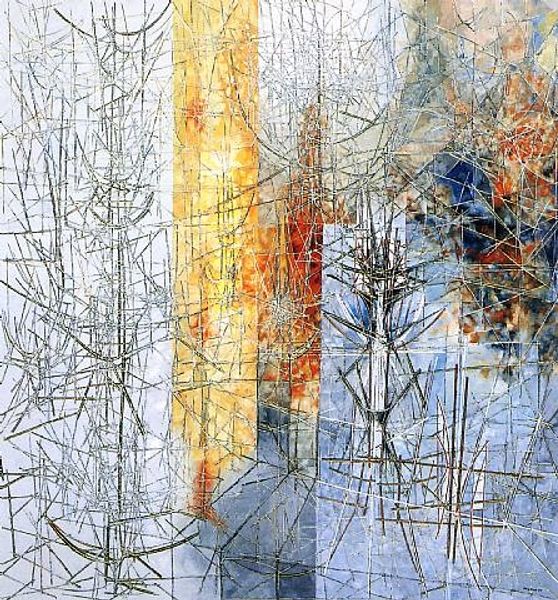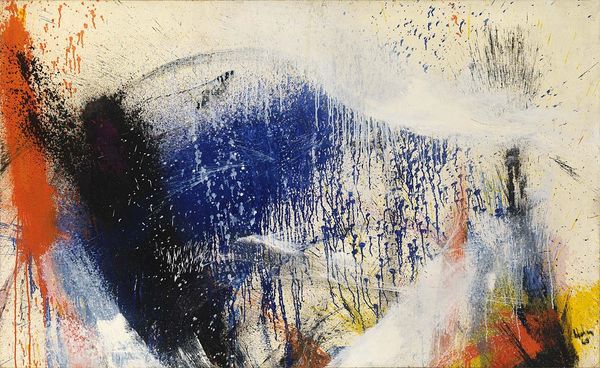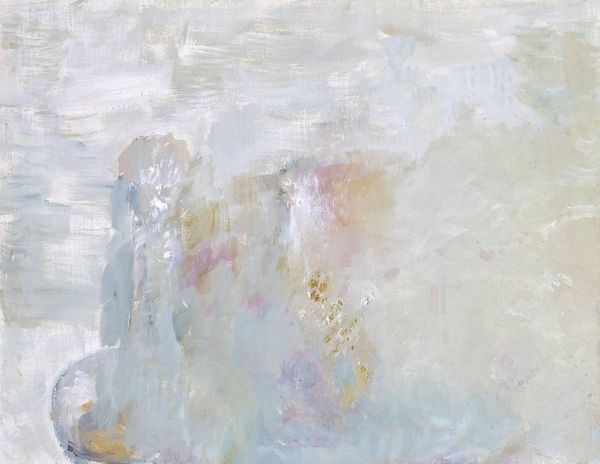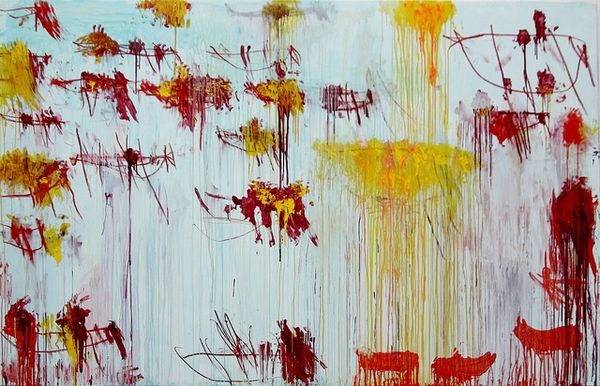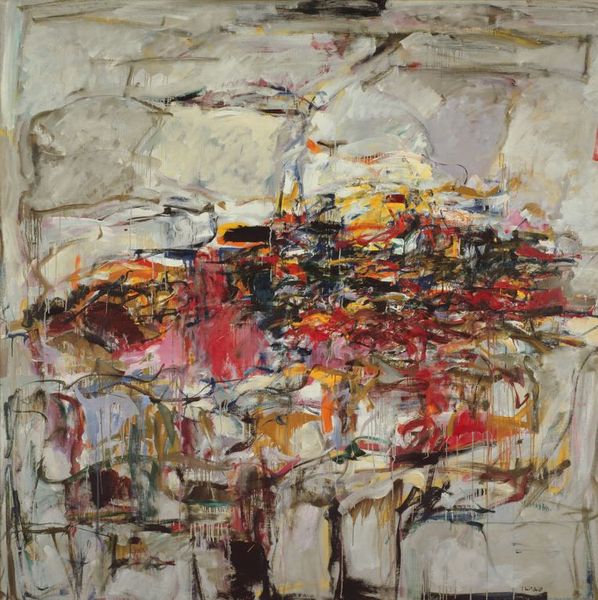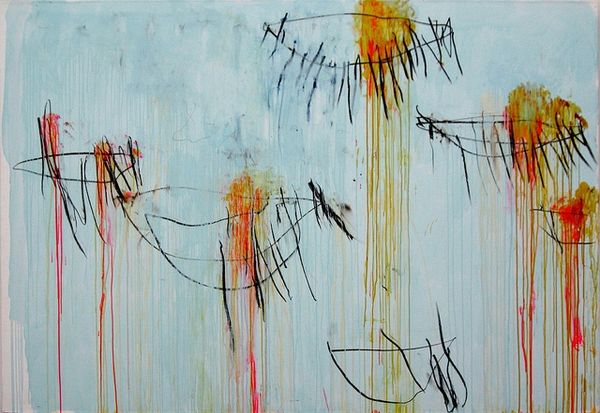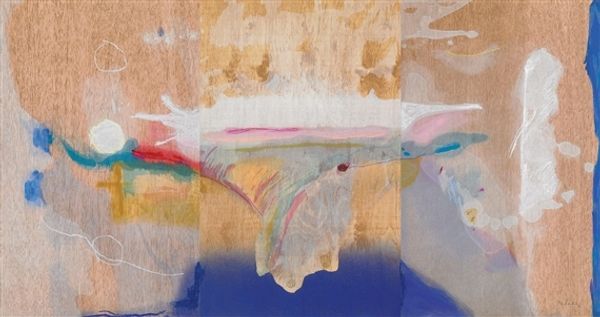
mixed-media, acrylic-paint, watercolor
#
abstract-expressionism
#
abstract expressionism
#
mixed-media
#
contemporary
#
abstract painting
#
landscape
#
acrylic-paint
#
watercolor
#
abstraction
#
watercolor
Copyright: Landon Mackenzie,Fair Use
Editor: Right, so here we have Landon Mackenzie’s mixed media piece, “Tracking Athabasca; Short Lines, Network of Stoppages." The overall effect, with the layering and muted colors, is of something obscured, perhaps a memory fading, what stands out to you? Curator: This piece resonates deeply within the historical context of landscape art. Looking at "Tracking Athabasca," I’m drawn to consider how landscapes have historically functioned as both expressions of national identity and records of human intervention, often aggressive. Do you notice how the artist employs a mixed media approach? Editor: Yes, I see the blend of watercolor and acrylic paint, it creates such a unique texture! Curator: Exactly. It is through the lens of abstract expressionism and landscape that Mackenzie critiques these conventional narratives. By layering different mediums and incorporating fragmented lines, Mackenzie alludes to the imposition of railway networks – like that around the Athabasca region of Alberta – onto the natural world. Editor: That makes sense, there's a fragmented feel about the networks that she portrays. I suppose it echoes the ways that infrastructure can disrupt environments, making literal marks, while creating this sense of detachment too. Curator: Precisely. Also, think about who benefits from those networks. And at whose expense are they built? Her piece demands critical engagement, and prompts crucial conversations about land use. Editor: This piece made me question our relationship with the natural world and how art reflects and shapes our understanding of it. Curator: Absolutely. "Tracking Athabasca" serves as a reminder that art can be a potent catalyst for critical dialogues, particularly around historical injustices.
Comments
No comments
Be the first to comment and join the conversation on the ultimate creative platform.
